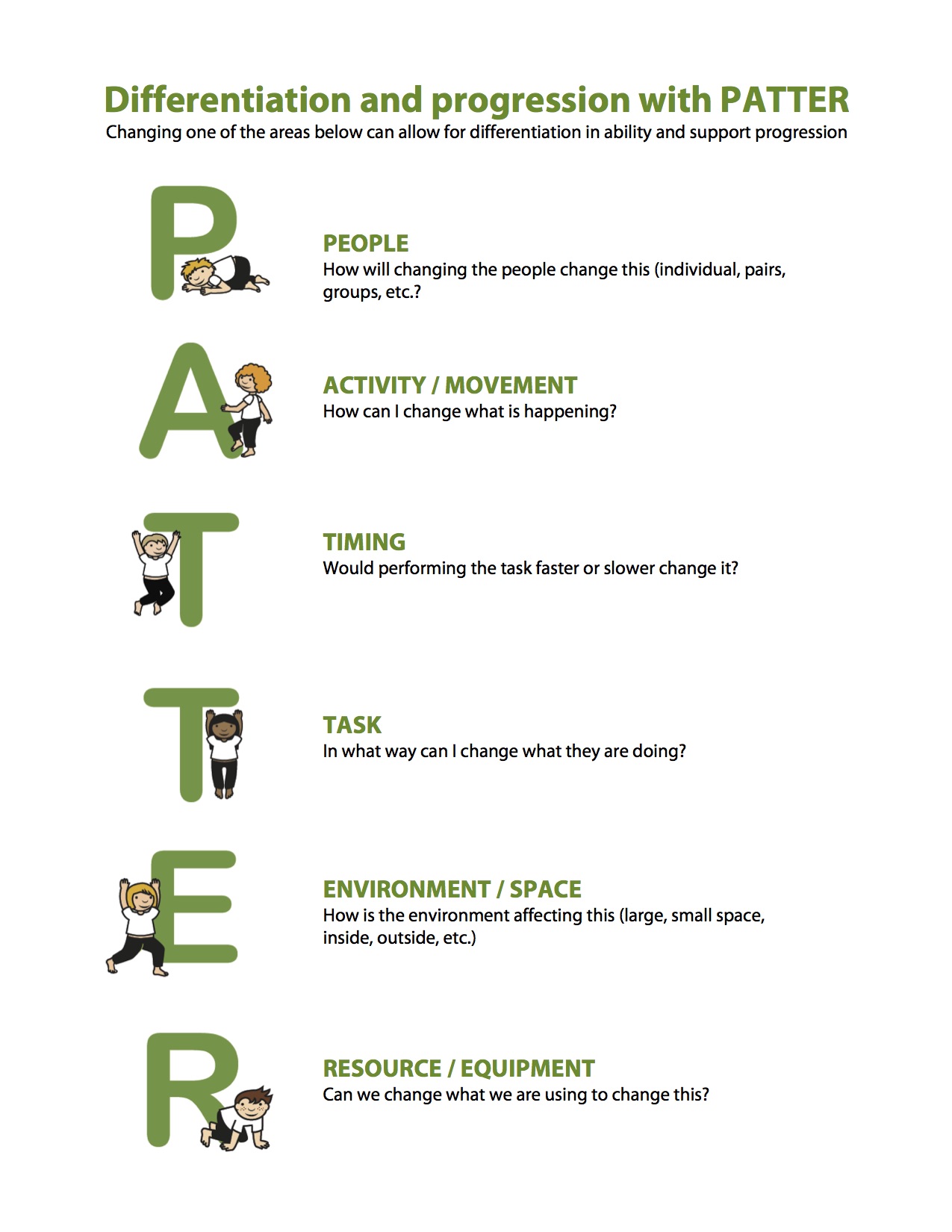Differentiation and Progression
Differentiation
In all planned lessons/sessions it is important to allow for differentiation. This will allow all children to push themselves and develop but will not make it too challenging, otherwise they will not enjoy the activity and will become demotivated.
Progression
Children will progress at different rates however it is important to plan for progression of all activities, tasks and skills.
Repetition is important for young children, with regular small changes to allow for progression.
PATTER
Use Patter when planning or on a daily basis to differentiate for children with different abilities or to progress children to more challenging activities/tasks.
Some Suggestions
P – PEOPLE
Children on their own
Children in pairs
Children in groups
Children doing activities with and without support from adults
A – ACTIVITY / MOVEMENT
Children move one part of their body
Children move many parts of their body
Children change their movement faster or slower
Add in cooperation
Add in competition
T – TIMING
Is the activity easier when performed slower?
Is the activity easier when performed faster?
Children will need to complete a task in an allotted time
T – TASK
Throw a ball rather than bounce the ball
Use feet rather than hands
Balance objects on different body parts rather than hold it
E – ENVIRONMENT / SPACE
Are children more confortable outdoors or inside?
Will children find the activity more challenging in a smaller space?
Will children find the activity easier closer together or far apart?
R – RESOURCE / EQUIPMENT
Can the equipment be smaller, larger, heavier, lighter, a different shape?
Can the same activity be performed with a completely different piece of equipment?
Will changing the equipment add a challenge?
6 Out of 10 Rule
If a child can complete a task more than 6 out of 10 times, then move on!
Working with Children of Different Abilities and with SEN
Use activities with various skills and start with the skills that all children can do. Then move more able children onto more complex tasks or activities while the less able children continue at the level they are able to achieve.
Set up three or four activities. Ensure that at least one of the activities can be achieved by all children in the class. More able children can rotate through all activities during the lesson while the less able children can remain at the activities that they are able to do.

